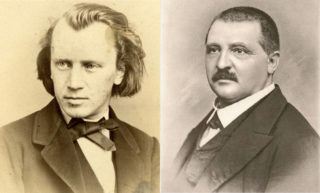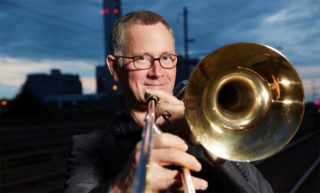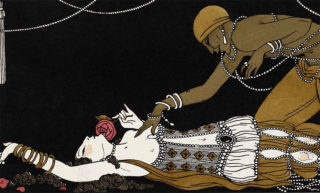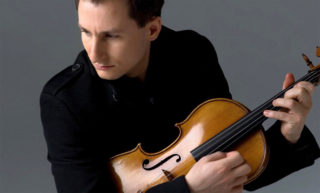Friends forever
Sinfonieorchester Basel
25 and 26 October 2017
Ivor Bolton, Conductor
Choir and soloists
Hector Berlioz - Roméo et Juliette
Berlioz is an interesting figure, not only because of his temperamental character, but also because he is the linking pin between two giants of classical musical: Beethoven and Wagner. This is particularly well illustrated by Roméo et Juliette, the symphonie dramatique on tonight’s program.
Loosely based on Shakespeare’s play, Roméo et Juliette tells the story of two young lovers from two rival families in Verona. Roméo (from the Montague family) and Juliette (from the Capulet family) get married secretly. Just before Juliette is forced by her family to marry Paris, she drinks a potion that puts her into a death-like sleep. Roméo, oblivious of what is going on, thinks Juliette passed away, and takes poison. Before he dies, Juliette wakes up and they embrace passionately. When Roméo deceases, Juliette takes her own life. Brother Lawrence, who united the couple in wedlock, reveals the history to both families upon which they decide to reconcile.
Beethoven’s 9th symphony (premiered in 1824) is seen as one of the big milestones of classical music. By adding vocal soloists and a choir to the orchestra in the last movement, he broke new grounds for the symphony as a genre. Berlioz was one of the first to recognize its new potential. Inspired by the British actress Harriet Smithson (whom he later married) in Shakespeare’s play Romeo and Juliet, Berlioz set out to draft his dramatical symphony Roméo et Juliette. Not only the prominent part of voice is a tribute to Beethoven’s ninth, but so is the final reconciliation. The lyrics “Alle Menschen werden Brüder” are not far removed from the last words of Roméo and Juliette: “Amis pour toujours” (friends forever).
Richard Wagner was present at the first performance of Berlioz’s Roméo and Juliette at the Paris music conservatory. He must have been extremely impressed. In 1860, Berlioz received the full score of Wagner’s opera Tristan and Isolde, inscribed with the words “To the great and dear author of Roméo et Juliette, from the grateful author of Tristan and Isolde”. Berlioz’s influence on Tristan is most distinct in the opening bars of the Tristan prelude, which are clearly inspired by Berlioz’s Roméo seul (Romeo alone), the beginning of part II.
We wouldn’t do Berlioz justice by seeing him as the bridge between Beethoven and Wagner only. Berlioz can rightfully claim his own legacy in the development of western classical music, most notably as the composer who led symphonic instrumentation to new heights. From Beethoven’s sixth symphony, the Pastoral, Berlioz learned how to express a non-musical account into a musical score, and developed this form further. His Symphonie Fantastique is now the prime example of this, but Roméo et Juliette is too.
From the opening bars, the music puts you on the edge of your seat. Sharp contrasts help the listener to follow the course of events. The introduction sketches out the entire story, starting with the family rivalries. The central part revolves around the famous love scene, mostly instrumental, while the final part illustrates the passionate unification with the returning love scene theme, followed by the tragic deaths of the protaganists and culminating in a grand reconciliation of the Capulets and the Montagues.
These English Program Notes have been published in the magazine (No. 3, 2017/2018) of the Sinfonieorchester Basel.








Comments